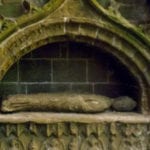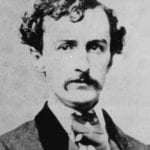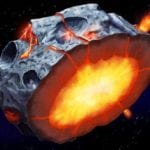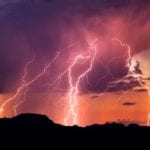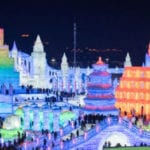 Mysteries
Mysteries  Mysteries
Mysteries  History
History 10 Surprising Stories About the Texas Rangers
 Humans
Humans 10 Philosophers Who Were Driven Mad by Their Own Theories
 Miscellaneous
Miscellaneous 10 Video-Game-Worthy Weapons and Armors from History
 Weird Stuff
Weird Stuff 10 Psychics Who Accurately Predicted Wartime Events
 The Arts
The Arts 10 Pieces of Art Inspired by a Broken Heart
 Health
Health 10 Science Fiction-Sounding New Medical Treatments
 History
History 10 Surprising Facts About the Father of Submarine Warfare
 Space
Space Ten Astonishing New Insights into Alien Worlds
 Weird Stuff
Weird Stuff 10 Bizarre Summer Solstice Rituals Still Practiced Today
 Mysteries
Mysteries Top 10 Haunting Facts About the Ghost Ship MV Alta
 History
History 10 Surprising Stories About the Texas Rangers
 Humans
Humans 10 Philosophers Who Were Driven Mad by Their Own Theories
Who's Behind Listverse?

Jamie Frater
Head Editor
Jamie founded Listverse due to an insatiable desire to share fascinating, obscure, and bizarre facts. He has been a guest speaker on numerous national radio and television stations and is a five time published author.
More About Us Miscellaneous
Miscellaneous 10 Video-Game-Worthy Weapons and Armors from History
 Weird Stuff
Weird Stuff 10 Psychics Who Accurately Predicted Wartime Events
 The Arts
The Arts 10 Pieces of Art Inspired by a Broken Heart
 Health
Health 10 Science Fiction-Sounding New Medical Treatments
 History
History 10 Surprising Facts About the Father of Submarine Warfare
 Space
Space Ten Astonishing New Insights into Alien Worlds
 Weird Stuff
Weird Stuff 10 Bizarre Summer Solstice Rituals Still Practiced Today
10 Intriguing Facts About The Dyatlov Pass Incident
On February 2, 1959, things took a macabre turn in the Ural Mountains. Nine experienced hikers died under what many consider to be questionable circumstances. The area in which they died would later be named the Dyatlov Pass in honor of Igor Dyatlov, the team’s leader. Investigators at the time never found conclusive evidence of what happened to these hikers.
Even today, rumors and speculation still surround the deaths of the expedition members. From military interference and cover-ups to UFOs and the infamous Yeti, conspiracy theories still swirl about what happened that fateful night in the Ural Mountains.
10 They Were All Experienced Hikers
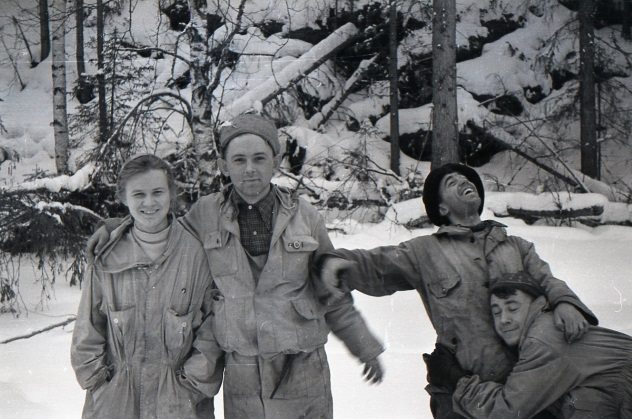
The nine hikers who were killed on their trip through the Ural Mountains were all exceedingly experienced, which made their unexpected death in the wilderness one that raised many questions. All graduate students, the hikers were taking a break from their studies; a trip to the summit of Mount Ortoten seemed the perfect excursion.[1] They were all considered to be hardy, fit, and competent hikers. The trip to the summit should have been well within their ability.
Being comfortable with the trek ahead, the group documented their trip with their cameras. Photographs from the start show happy-go-lucky friends on an adventure. One can see rugged people smiling, wading through snow in full health, and climbing effortlessly. What could have possibly made these spirited and capable adventurers die with little or no warning? Why did this hike prove to be a death sentence?
9 The Infamous Tent
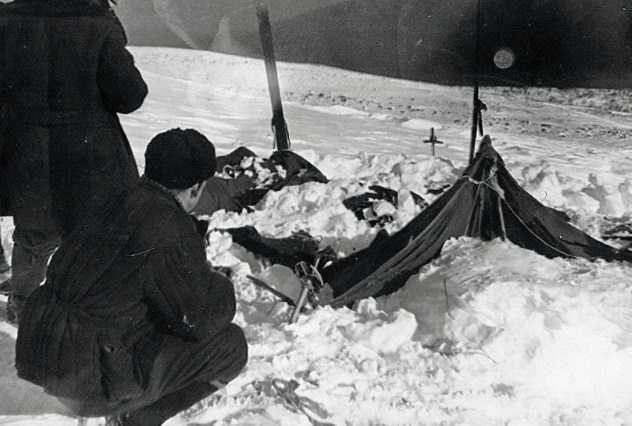
Whatever spooked the hikers that fateful night in 1959 caused them to perform many erratic actions. One of the most confusing was the cutting of their tent and the leaving of important items. The tent was cut open from the inside. Many researchers have asked the question, “What could make these campers so frightened that instead of simply opening the tent, they were forced to quickly cut a hole for escape?”
Along with their apparent need to create an immediate escape point, the hikers left almost all their material goods, including cold weather gear, in the tent. In February, the Ural Mountains have an average temperature of –16.6 degrees Celsius (2.1 °F), well below the freezing point. Jackets, gloves, pants, and other warm clothing were nevertheless left in a hurry, as well as navigation supplies such as compasses. The tent also contained three axes and two Finnish knives for basic camping practices such as woodcutting. Even with items that could be used as weapons, the hikers still fled in a terrified panic. Strangely, one hiker, Semyon Zolotaryov, fled the tent without any clothing or gear but took his camera.[2]
In the middle of winter, nine experienced hikers became so frightened of some unknown threat that they risked hypothermia and exposure to escape a terrible fate. When the thought of freezing was better than an imminent death, one must ask: What could be that frightening?
8 States Of Undress
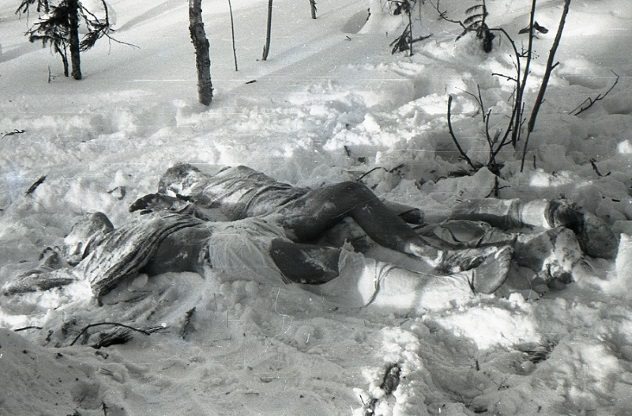
Based on the findings within the tent, researchers know that the hikers left nearly all their belongings behind, including cold weather gear. When the bodies were finally located, rescue teams soon discovered that five of them were nearly naked, wearing merely undergarments and, in a few cases, socks. Researchers were perplexed as to why these people, who were very familiar with the weather in Russia, more specifically the Ural Mountains, would have left themselves so exposed to the elements.
Many believe that the lack of clothing on the victims was a case of paradoxical undressing, which occurs in cases of lethal hypothermia. Sufferers feel as though their bodies are succumbing to a blaze of heat when in fact the nerves in their blood vessels are suffering from paralysis, which leads to vasodilation, giving the sufferer a sense of intense heat.
A macabre discovery was made as more corpses began to be found within the snow. The four other hikers were found nearly completely clothed. Upon investigation of the photographs taken by the students, it was discovered that these hikers had confiscated the clothes of their deceased companions. Clothing comparisons show that the last four people took the clothes off of their dead friends in a last-ditch effort to stay warm and survive the extreme cold.[3] Having to scavenge the corpses of your companions adds to the dread of already being pursued by a threat that has no real identity.
7 Inconsistent Injuries
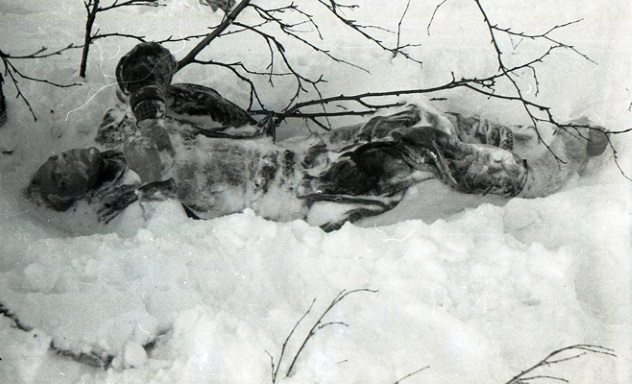
As if things weren’t already weird enough, once search parties started discovering the bodies of the hikers, they found that each person had inconsistent injures. Different people suffered different injuries, though all were fleeing from the same unknown assailant.
The first two team members discovered were Yuri Doroshenko and Yuri Kirvonischenko; they were the victims found closest to the tent. Their hands were brutalized severely. They resembled bloody masses. A tree near their bodies revealed chunks of human flesh embedded in cracks in the bark. The men were so terrified that they tore their hands up in an attempt to climb to a safer place during the “attack.”
Igor Dyatlov was found shortly after, and his state of unrest was just as unnerving. Lying on his back, Dyatlov’s corpse was found with his jacket unbuttoned and both of his hands clenched tightly to his chest. His face was covered with minor abrasions.[4]
Rustem Slobodin was soon found, and his corpse presented a new and devastating injury. Along with other minor scrapes, his skull was fractured severely. An 6-centimeter (2.4 in) fracture split the left side of his head. Despite this injury, experts were still convinced that he died of hypothermia. Zinaida Kolmogorova was found to have suffered many injuries to her face, but her hands took the brunt of the damage. Abrasions and frostbite ravaged the girl’s hands and phalanges.
Two months went by before the other hikers were discovered in the snowy Urals, and their injuries were just as odd. Nikolai Thibeaux-Brignolles was discovered well-dressed under the layers of snow, but his skull had been bashed in. His jaw and skull suffered severe fractures. What is most peculiar is that there was no outside damage. The severe injuries on the inside could not be easily identified via basic observation of the body.
The injuries on Alexander Kolevatov and Semyon Zolotaryov were even stranger. Zolotaryov was missing his eyes and the soft tissues near the ocular area. His skull showed a wide wound, and his chest was so compressed that it spread and broke his ribs. Kolevatov, too, was missing soft tissues near his eyes and on his skull, along with an open wound in the skull behind the ear.
Perhaps the most shocking discovery was made when searchers found the body of the last hiker, Lyudmila Dubinina. She was discovered with all the soft tissues missing from most of her face. Both her eyes were missing, and her nose had been completely crushed. Her mouth was positioned in an open, almost “screaming” position, and upon closer investigation, it was found that her tongue had been removed from her body.
Experts are still unclear as to why each body was so drastically different in terms of their injuries. The big question still is what could have caused these horrific injuries?
6 ‘Unknown Compelling Force’
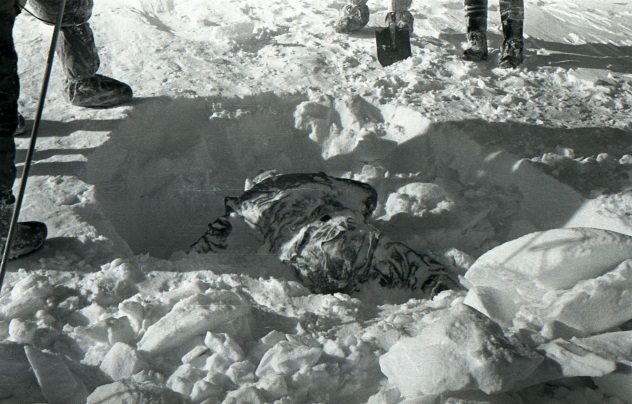
Medical examiners had a big job ahead of them while examining all the bodies of the hikers. From missing tongues to cranial fractures, it was easy to view what had happened to these individuals. However, no matter what happened externally, the cause of the death was always ruled hypothermia. Yes, many suffered from frostbite and hypothermia, but that may not have been the immediate cause of death for all.
The other explanation written down was that an “unknown compelling force” was used to injure and kill the hikers on the Ural Mountains.[5] But that’s all that was said. There is no plausible indication of what that force was, be it avalanche or any other happening that could have occurred. It was, however, noted that some victims had injuries similar to car crashes. Research on the “compelling force” simply ended with a few scribbled words in an autopsy file. Did the examiners know more information that was not available to others?
5 The Case Was Closed Abruptly

After examinations of the bodies were done and the “compelling force” was stirring in the air with investigators, the case of the Dyatlov Pass hikers was closed almost immediately. Russian government officials took all documentation about the case and possible causes of death and sealed them by issuing a government resolution.[6]
Before adding the Dyatlov Pass incident to the realm of cold cases, investigators did try to come up with some explanation as to what happened to the hikers. Attempts at reenacting what happened that tragic night were performed without any real questions being answered. Dead ends and disappointments led to the quick closing of the case. However, the “compelling force” once again raised its unnerving head, as the official case files for the incident claimed that this “force” was the reason for the deaths of the members of the hiking party.
Due to the lack of compelling evidence and the hush-hush tones of the government and its investigators, the Dyatlov Pass incident quickly became fodder for conspiracy theories and produced an increased thirst to know what happened to those hikers.
4 Radiation Found On The Hikers
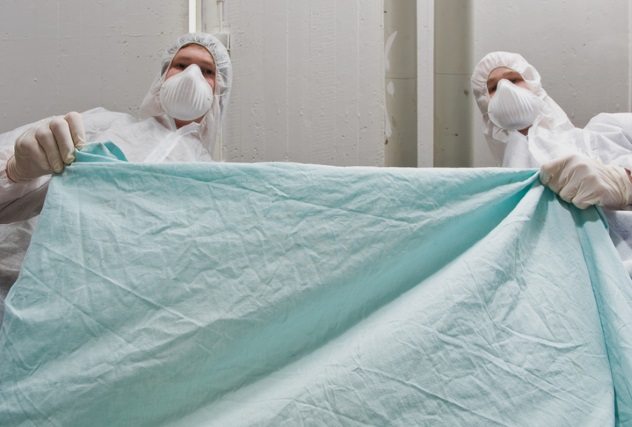
Things took an even stranger turn in the investigation of the Dyatlov Pass incident when it was discovered that the clothes of the hikers contained extremely high levels of radiation. The campsite, too, upon further exploration, gave off large amounts of radiation as well. Many members of the hikers’ families also noted that during funeral services, the bodies of their lost loved ones appeared to be giving off a unnatural orange glow and that some of their hair had gone gray. The orange coloration was thought to be due to intense radiation at the scene of their deaths.
Being that this was a time for new voyages into the realm of nuclear weapons, it was thought that perhaps the hikers had come across some Russian testing zone, leading to their deaths. Russian authorities, however, assured that no testing was going on in the area. Another speculated explanation for the radiation found on the hikers and in the area was from the environmental makeup of the area itself; it was naturally spewing radiation. This theory, too, was dismissed.[7]
Did the hikers come upon some unknown military site only to become unexpected victims of nuclear testing? If no testing was occurring, how did these hikers become so irradiated that it essentially changed the chemical makeup of their skin and hair? Though a military explanation may seem most likely, the hikers were found without external damage which would account for a radiation blast. The radiation, like so many other aspects of the incident, is still a mystery.
3 Lights In The Sky
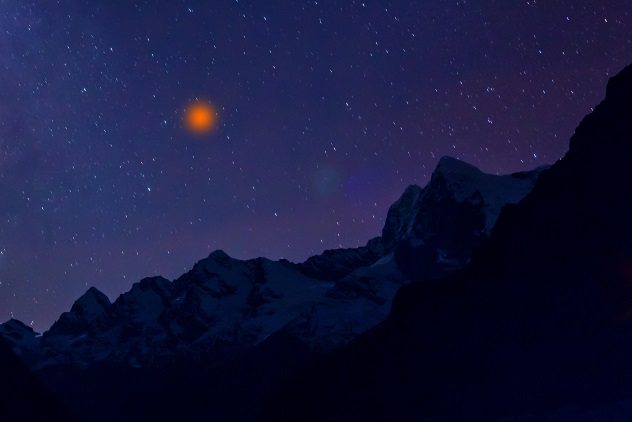
During the night of the tragedy, there was even more weirdness happening in the skies above the students. Another set of hikers, who were a distance away from the Dyatlov Pass group, claimed to have seen multiple “strange orange spheres” hovering in the northern sky. During the six weeks, these spheres were a common occurrence in the surrounding areas. In addition, Lev Ivanov, who was in charge of the investigation at Dyatlov Pass, noted in his report at the time that the tops of the trees around the hikers and their campsite were charred and burned. During this era, the thought of UFOs causing this sort of damage was unheard-of and highly unbelievable, but Ivanov put these strange occurrences into his records.
Ivanov kept up his research into the possible relationship between the UFOs and the Dyatlov Pass incident and met struggles the entire way. He was prevented from looking at any KGB documents about the investigation. In an interview he gave during the 1990s, Ivanov claimed he was pressured by many Russian officials to doctor and repeal from his records any information about UFOs in relation to this case.[8]
Was the government trying to keep Ivanov quiet? What were they trying to hide? An argument that has stood the test of time is that the hikers came across a group of aliens that didn’t want to be discovered. As wild as this theory may seem, there are those who truly believe it. Given the horrendous injuries suffered by Dubinina, namely her missing tongue and eyes and internal damage, many believe that the only way to suffer such mutilation is through the work of aliens. Some even say that the aliens took her body parts for trophies.
2 The Camera
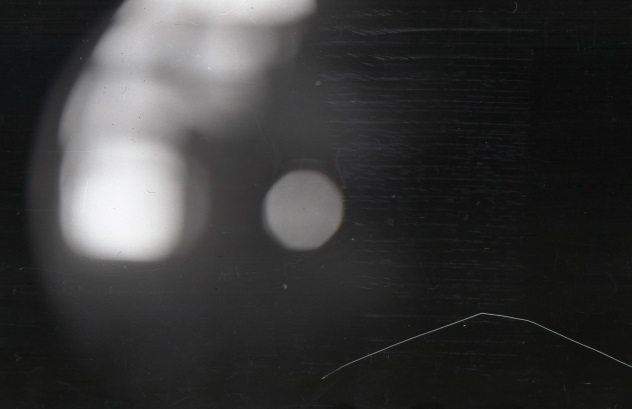
The Dyatlov Pass hikers took many cameras with them on their adventure, and most of their photos were completely normal: pictures of the group, nature, the campsite, and various other images. However, one photograph has proven to be of great intrigue to investigators. The last image on Krivonischenko’s camera shows some bright object moving against a dark background.[9] This image has notoriously been called the 33rd frame.
What makes the taking of this photograph even more interesting is its discovery after the death of the hikers. Upon examination of the tent, researchers found that Krivonischenko’s camera was on an improvised tripod. The lens cap was open, and the camera was ready to shoot. The hikers had sat for a time and premeditated the setting up of this tripod and camera before they made their infamous escape from the tent. Were the hikers setting up the camera to capture an image of whatever ultimately ended their lives? What did they see up in the mountains that made them do this?
1 KGB Infiltration?
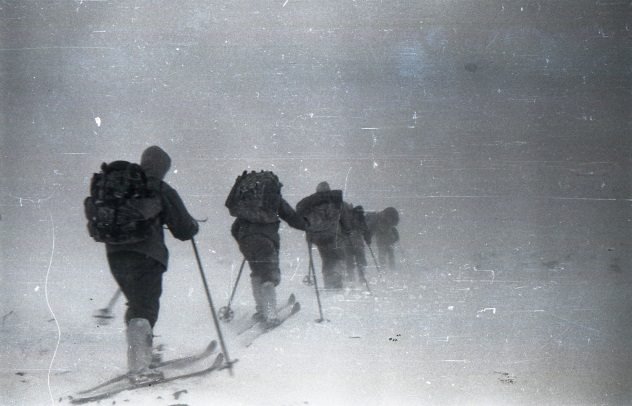
Though there is no conclusive evidence of what actually happened in the Urals that fateful night in 1959, there are many theories, both wild and seemingly plausible. One of the most talked-about theories is that of infiltration by the KGB into the group of hikers. The claim is that a few of the students were actually undercover KGB agents who were to meet with some Americans to do a “controlled delivery.” When the Americans realized they were being fooled and given false items, most notably samples of radioactive materials, they killed the KGB agents and the rest of the hikers, who had obviously seen too much.[10]
Though this seems highly implausible, one must think of all the cover-ups, the hushed tones, and the quick wrap-up of the case by the Russian government. Where they truly trying to keep everyone quiet? Did they know about undercover agents? Chances are that there were no agents in the group, but without conclusive evidence, every theory on the Dyatlov Pass incident is up for grabs.
Hi! I’m Theta! I am a full-time librarian with a penchant for writing, animals, and all things obscure. I love traveling, my pets, Game of Thrones, and reading.
Read more about mysterious deaths on 10 People Who Died Following Interaction With A UFO and 10 Mysterious Deaths Connected To Conspiracy Theories.


